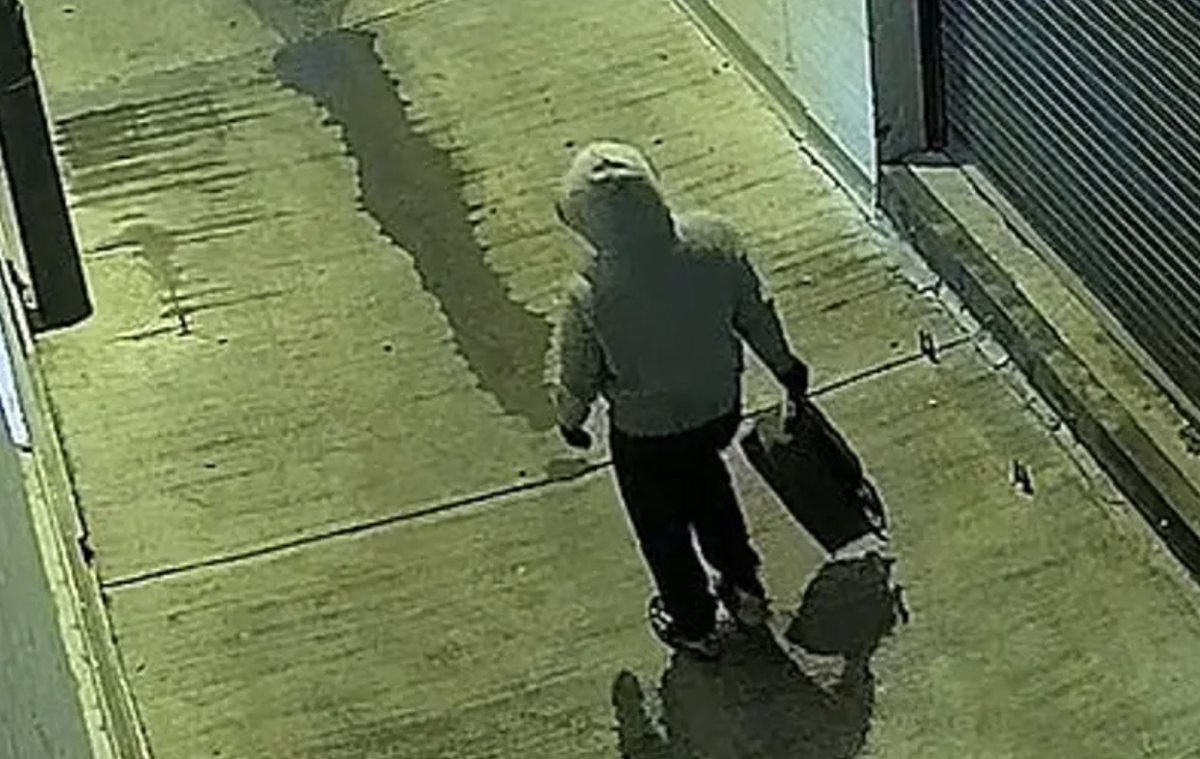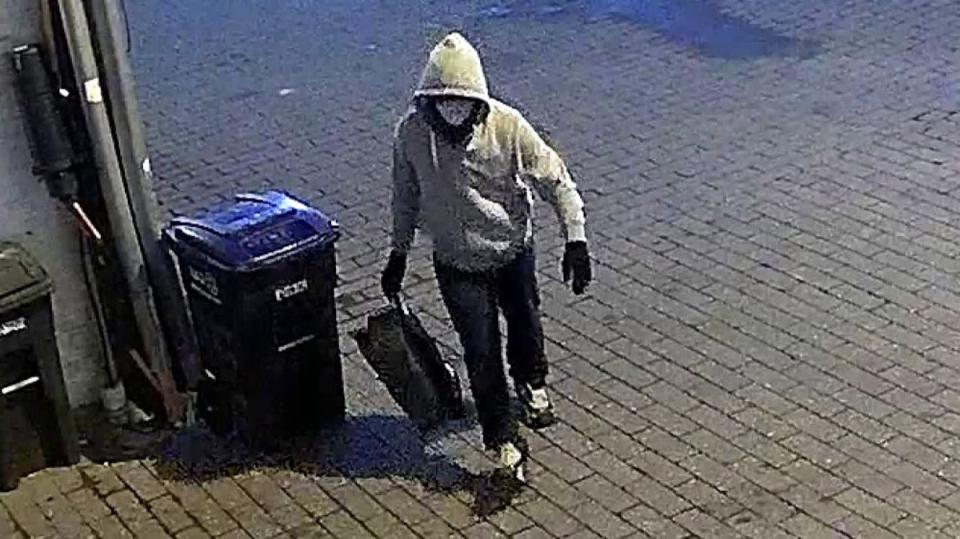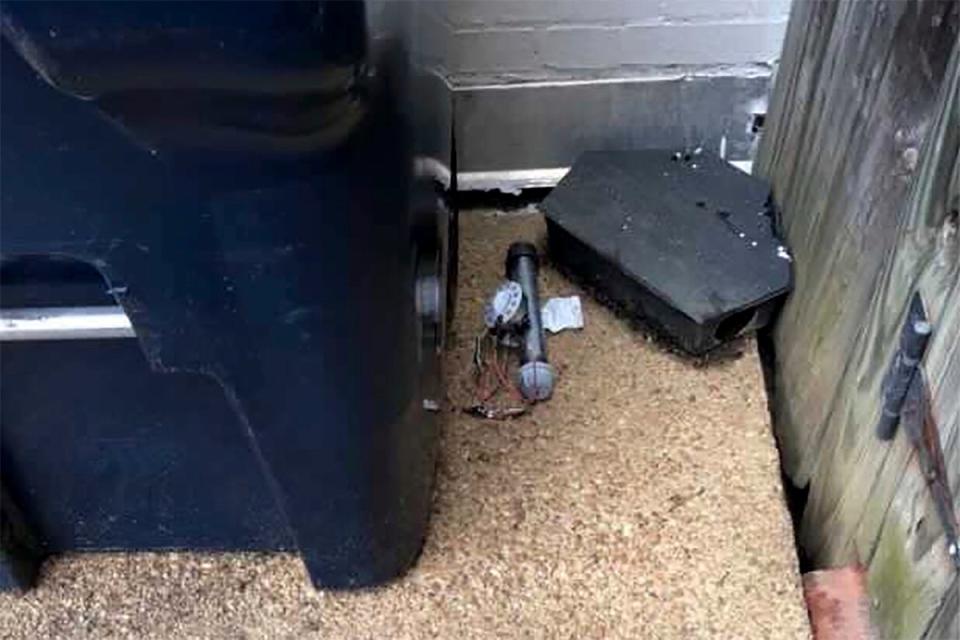Could a new reward solve Jan 6’s biggest mystery? Inside the hunt for the DC pipe bomber

For the past year, the FBI has been hunting down and arresting the Trump supporters who allegedly stormed the Capitol on 6 January. More than 700 people have been charged with crimes related to the Capitol riot, with some already convicted and serving prison terms.
Despite the staggering number of arrests — largely stemming from public tips to the FBI — one individual has still managed to evade the FBI's custody; the maker of a pair of pipe bombs found the day of the riot.
On 6 January, authorities identified two pipe bombs in the DC area — one outside of both the Republican and Democratic national headquarters.
The bombs were found just minutes before the riot started, drawing DC Metropolitan Police officers away from the Capitol to respond to the threat.
Neither of the devices were detonated, but the bomber has thus-far eluded capture.
A suspicious package
The FBI believes that both bombs were placed on the night of 5 January, just a day before the "Stop the Steal" rally that eventually degraded into the attack on the Capitol. The bomber is believed to have dropped the bombs off between 7:30pm and 8:30pm. One of the bombs was placed in an alley behind the Republican National Committee Headquarters, and another was set next to a park bench near the Democratic National Committee Headquarters, just a five-minute walk away.
The bomb near the RNC headquarters was first spotted by Karlin Younger, a native of Wisconsin who was walking by the site and noticed the explosive. She immediately alerted the police. Around the same time, a "suspicious package" — the pipe bomb — had been discovered at the DNC headquarters, prompting an evacuation.
Follow live updates on the January 6 anniversary
Officers rushed to respond to both incidents just as the Trump supporters gathered outside the Capitol began to push their way into the building. The FBI now believes that the bombs may have been planted intentionally to draw law enforcement away from the Capitol.
Law enforcement did not know at the time why the bombs did not explode, but later stated that it is likely the explosives had incorrectly installed timers or batteries.
While the bombs were ultimately destroyed, the bomber has never been caught. In September, the FBI released surveillance video purportedly showing the bomber on the night the bombs were placed.
What we know about the bomber
Based on the FBI surveillance footage, the bomber was wearing a grey hoodie, black gloves, light grey Nike Air Max Speed Turf shoes, glasses, and a coronavirus face mask. They also were carrying a backpack to transport the bombs.
John Iannarelli, a retired FBI agent with 20 years at the bureau who writes and gives lectures on security topics, said that although the bombs are not sophisticated devices, the individual who built them appears to have meticulously planned their actions for the night of 5 January.

"This person also, as evidenced by their planning, went to pretty good lengths to conceal themselves. I mean, it was cold at night, but yet you see other people out and their faces aren't completely covered. They're not wearing glasses, sunglasses at night time," he told The Independent.
Further, he believes the bomber likely was not carrying a cellphone the night they dropped off the bombs. Mr Iannarelli said that law enforcement would have used cell towers in the area to narrow down the number of people near the bomb sites on the night the explosives were placed. He believes that had the individual had a phone, the FBI would likely have more information on the subject than just surveillance video.
The FBI also noted that the suspect traveled by foot the entire time they were moving between and away from the bomb sites. Mr Iannarelli believes that was likely an intentional decision, as taking a taxi or an Uber creates a trail that agents could have followed to track the bomber.
Why hasn't the bomber been found?
According to Mr Iannarelli, the FBI was likely engaged in a "full-court press" effort in the immediate aftermath of the Capitol riot to locate the bomber.
"Everything that could be been done was being done, I'm sure. That includes obtaining surveillance video. It wasn't uncommon that I would knock on doors looking for people who had cameras that we could pull footage from," he said. "I'm certain all of that was done at the time."
He also said the FBI would have already performed DNA analysis to compare any DNA recovered from the bombs to DNA already cataloged in criminal databases. Since an arrest has yet to be made, Mr Iannarelli reasoned, the bureau either did not find DNA evidence on the bombs or the DNA that was collected did not match any cataloged individuals.
Barring a breakthrough with the physical or digital evidence, the FBI now has to rely on tips from the public to aid its search for the bomber.

"I'm sure agents and task force officers have talked to everyone who was in that area or lives or works in that area who might have seen anything," he said.
The FBI's September press release encouraged anyone with information on the bomber's identity to reach out. Further, the bureau, along with the ATF, is offering a $100,000 reward for information leading to the bomber's identification. On 4 January 2023, the FBI upped the reward to $500,000.
Mr Iannarelli noted that, even with a reward, some cases remain unsolved for years until public tips break them back open. He said he believes that "law enforcement is looking for that break."
"The lack of any arrests his point should not be interpreted as 'this is not a priority.' No case in the FBI is closed until there's a reason to close it," Mr Iannarelli said. "In this case, it would be the arrest of the person who placed the bombs. So it's going to remain open and it's going to remain active until the person is caught and brought to justice."
Conservative conspiracy theories
In the aftermath of the Capitol riot, some conservative media figures and lawmakers have attempted to create alternative narratives about what happened on 6 January. Despite hours of video evidence and mountains of photographic evidence showing Trump supporters storming the Capitol, lawmakers like Congressman Andrew Clyde have suggested the attack is being overblown in the media. He likened the riot to a "normal tourist visit."
The DC pipe bomber has also been absorbed into the right wing attempt to rewrite the narrative of 6 January.
In December, Fox News host Tucker Carlson - who produced an entire conspiracy-laden documentary dedicated to reframing the Capitol riot as a false flag operation planned by the Capitol police and the FBI - accused the House select committee investigating the attack of refusing to acknowledge the bomber.
He said in December that the committee "stopped talking about this person," which is evidence of little, as there is little information known about the bomber for the committee to discuss.
Representative Marjorie Taylor Greene — who is currently on a crusade to paint the Capitol riot defendants as victims of unlawful imprisonment — also suggested the committee was ignoring the pipe bomber.
“A person placing pipe bombs at the RNC and the DNC was targeting both political parties the night before the J6 Capitol riot,” she wrote in a tweet. “Those should be the phone records subpoenaed. Why don’t they care about the pipe bomber?”
As Mr Iannarelli noted, it’s very likely the bomber did not take a cell phone with them on the day they planted the bombs, otherwise they likely would be in custody at the moment.
Donald Trump even weighed in on the pipe bomber's whereabouts and alleged allegiances during an interview with right wing media figure Candace Owens.
He insisted the large number of cameras in downtown Washington DC should have captured numerous photos of the bomber — whom Mr Trump refers to as a "he," though the bomber's gender is not currently known — and insinuated not only that the FBI likely knew who the bomber was, but that the individual was a member of antifa or Black Lives Matter.
“Why aren’t they finding this pipe bomber and how come other people haven’t been revealed?” he said. “Because I think they were more than just — let’s call them MAGA people. … You have BLM and you had antifa people, I had very little doubt about that, and they were antagonising and they were agitating.”
Mr Trump was lying. There is no evidence that antifa or BLM affiliated individuals had any participation in the Capitol riot or the the placement of the bombs.

